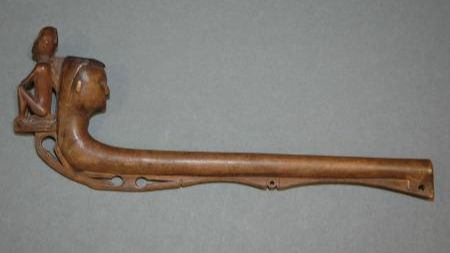by Bradley Clements

In his doctoral dissertation, Alan Ojiig Corbiere (2019, 80) explains that:
Smoking the pipe together and making a pledge was a way of expressing sincerity but the giving of a pipe was also an expressive and communicative act. At St. Joseph’s Island in 1829, Ojibwe Chief Shingwaukonce, tied these two ideas together when he stated to the British commanding officer, while holding strings of wampum in his hands, “Father – The Great Master of Life gave us pipes and Wampum for the purpose of conveying our ideas from man to man.”
In the case of this Haudenosaunee pipe that entered the British Museum in 1882, the pipe appears to be literally looking at the smoker, witnessing their relational commitment. On the anniversary of GRASAC’s first newsletter (March 2021), as we plan communications for the future, it is humbling and inspiring to consider teachings of pipes. They remind us to communicate honestly and with commitment to our relations: to each other as Indigenous and non-Indigenous peoples, to the earth, and to ancestral and other-than-human witnesses.
